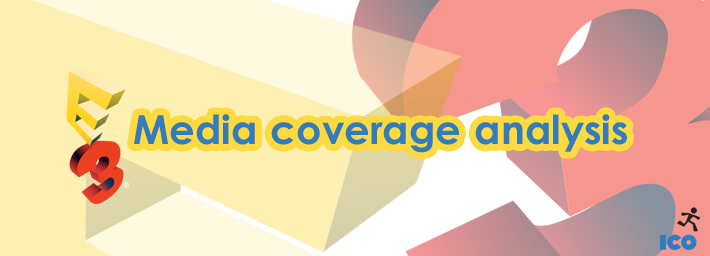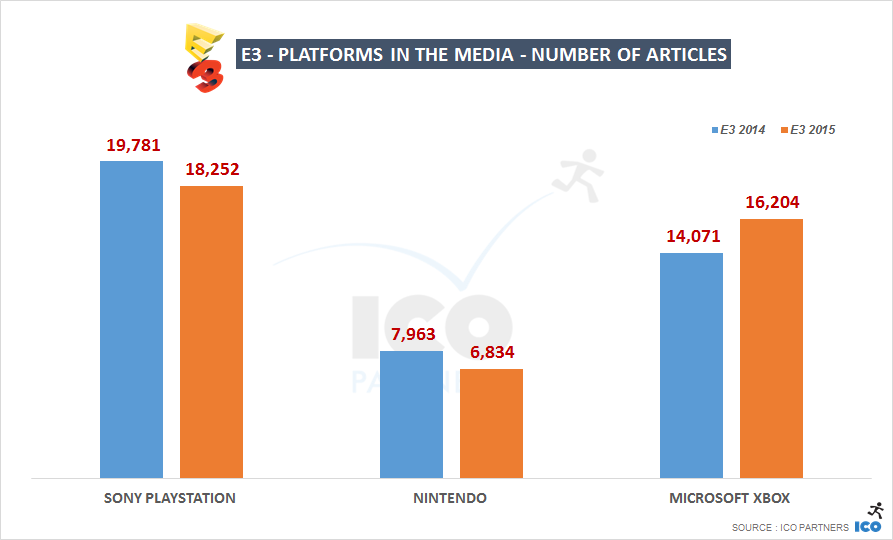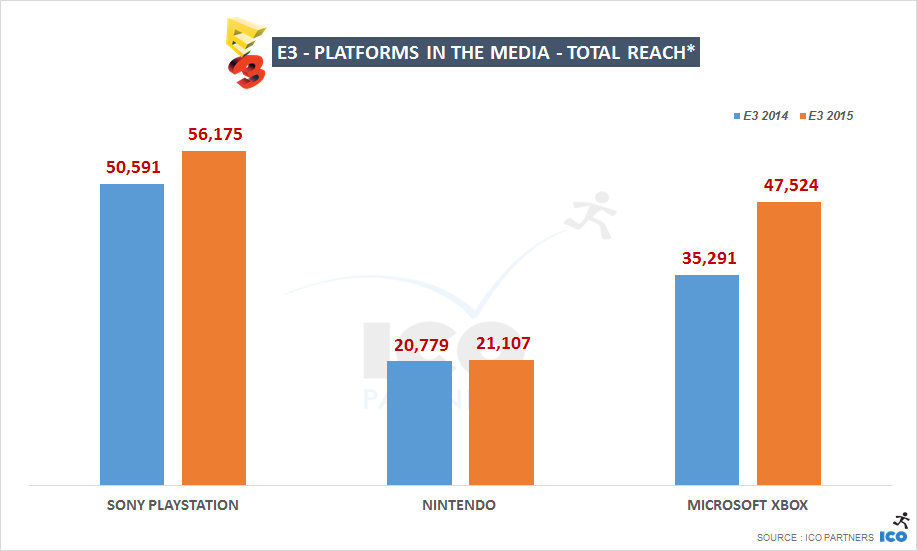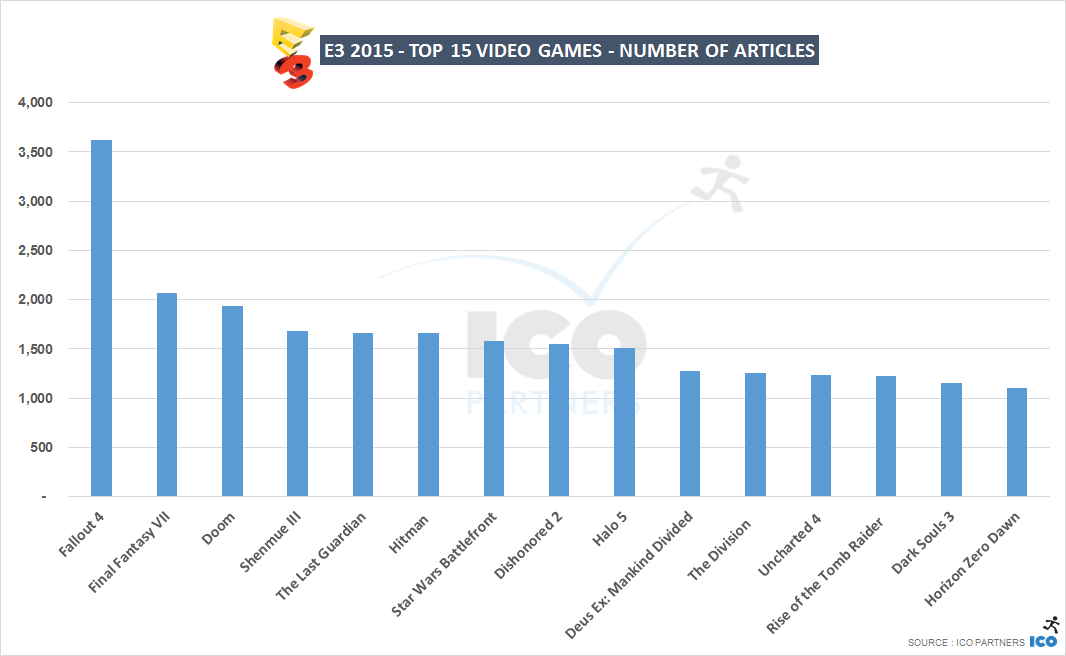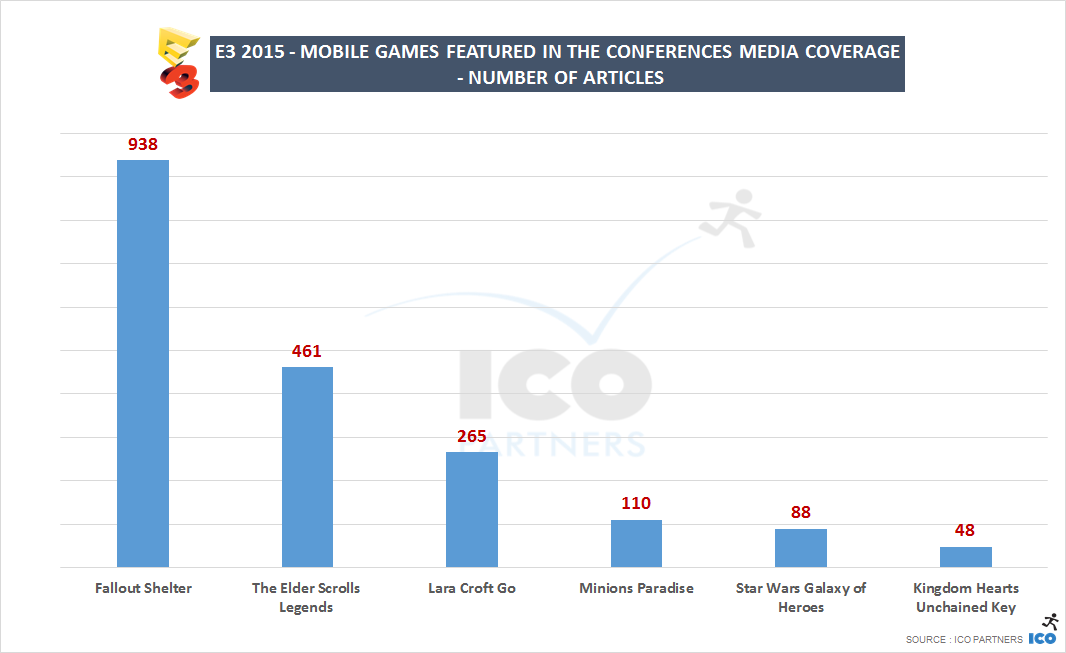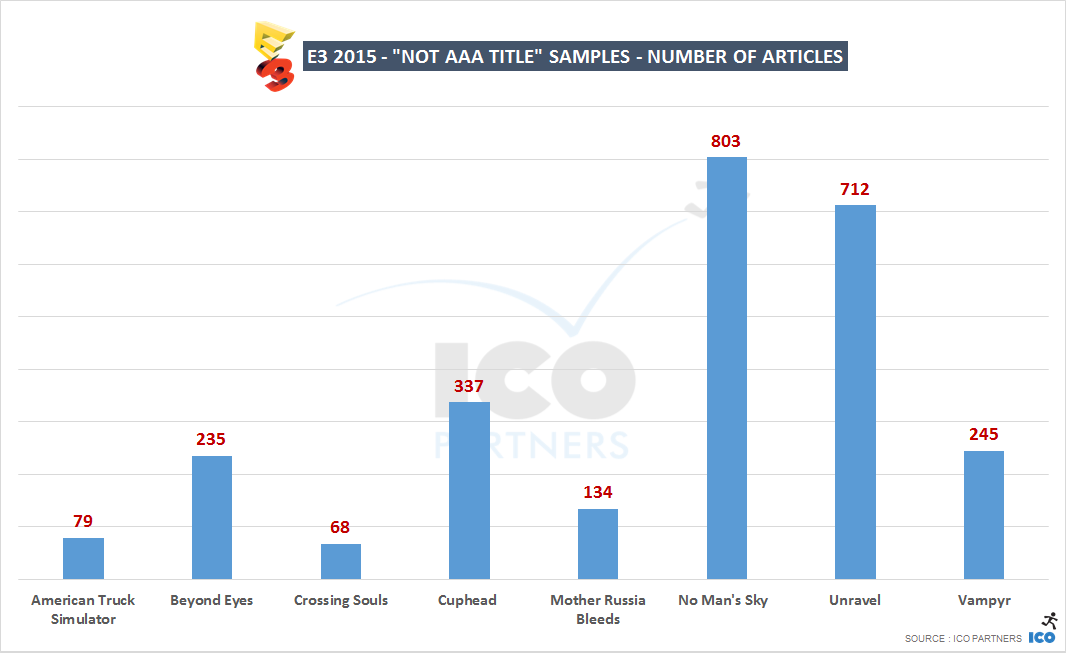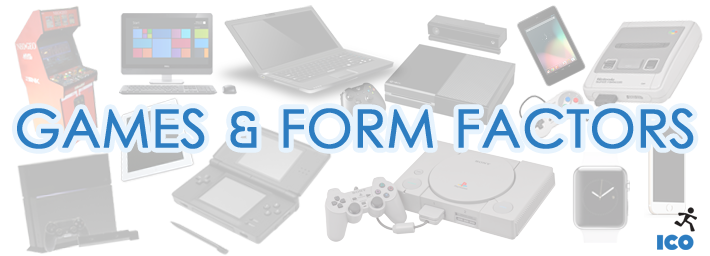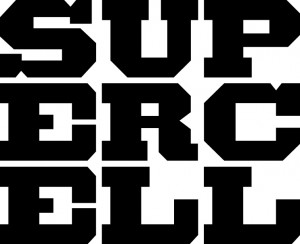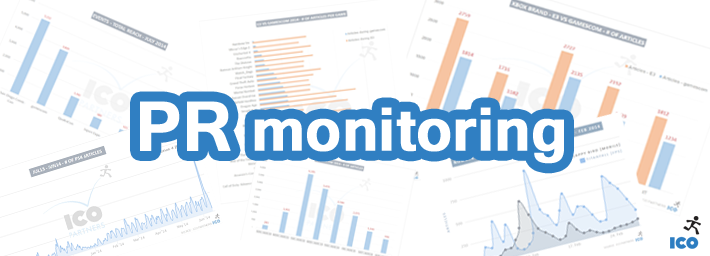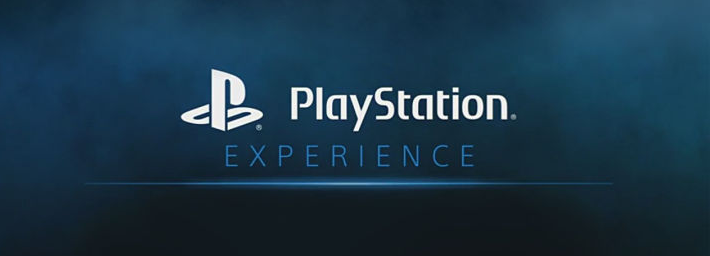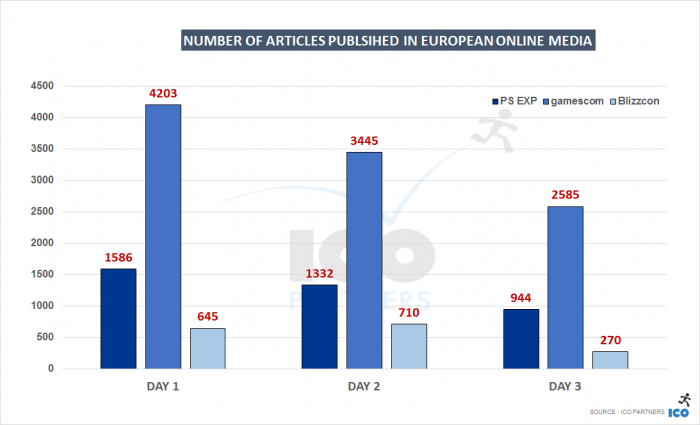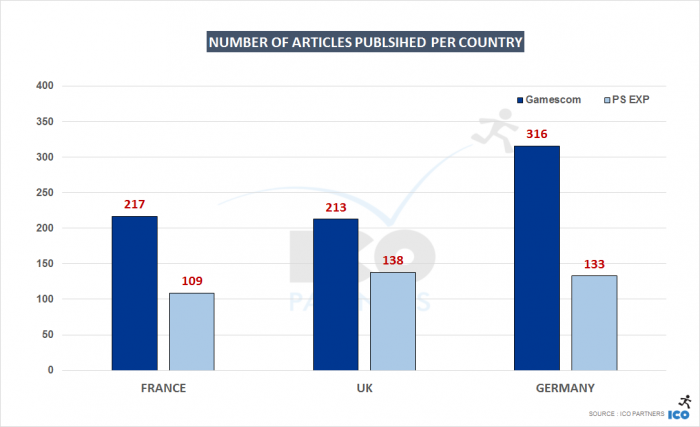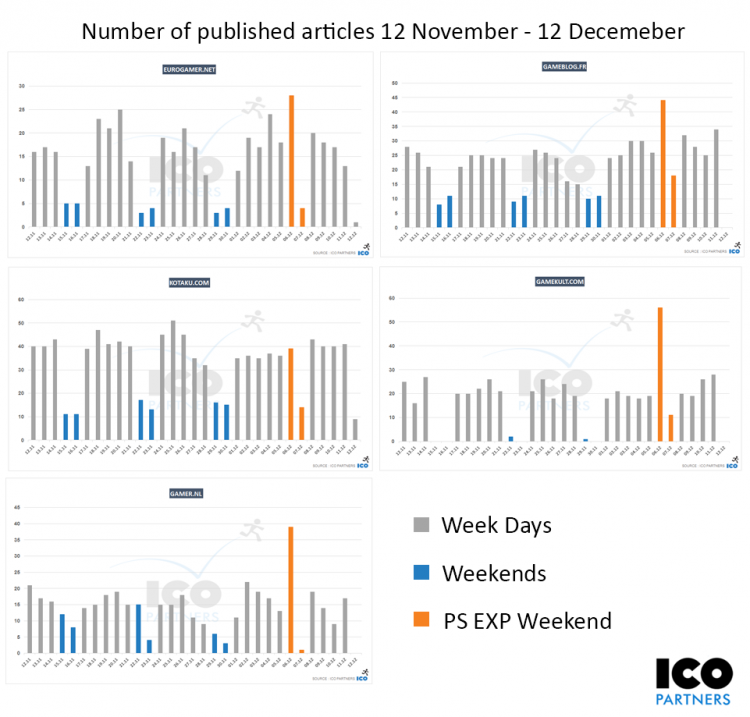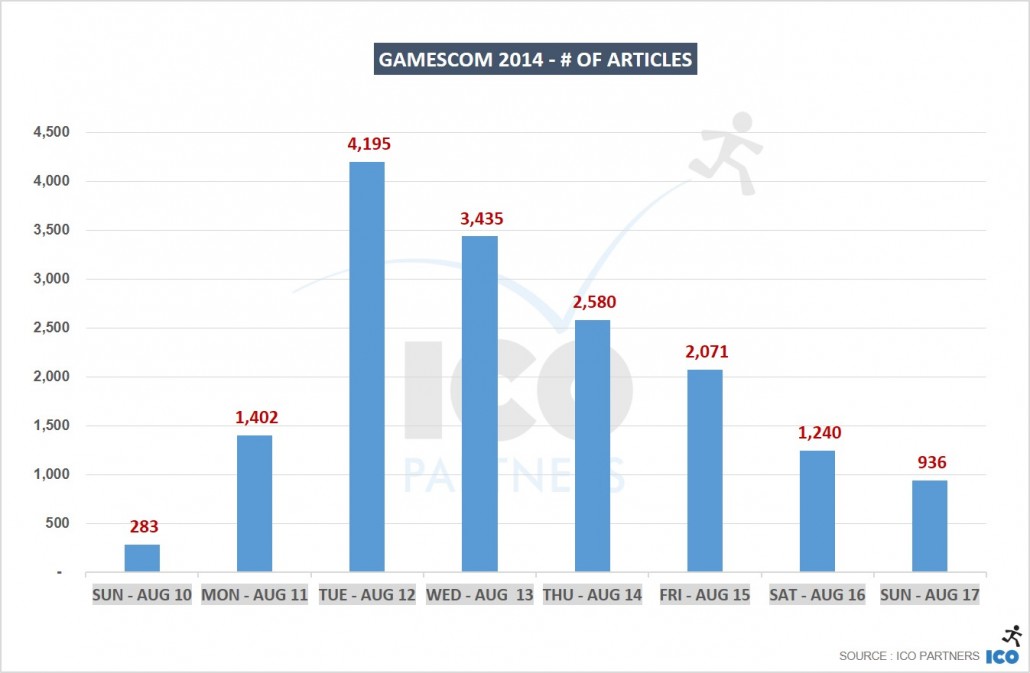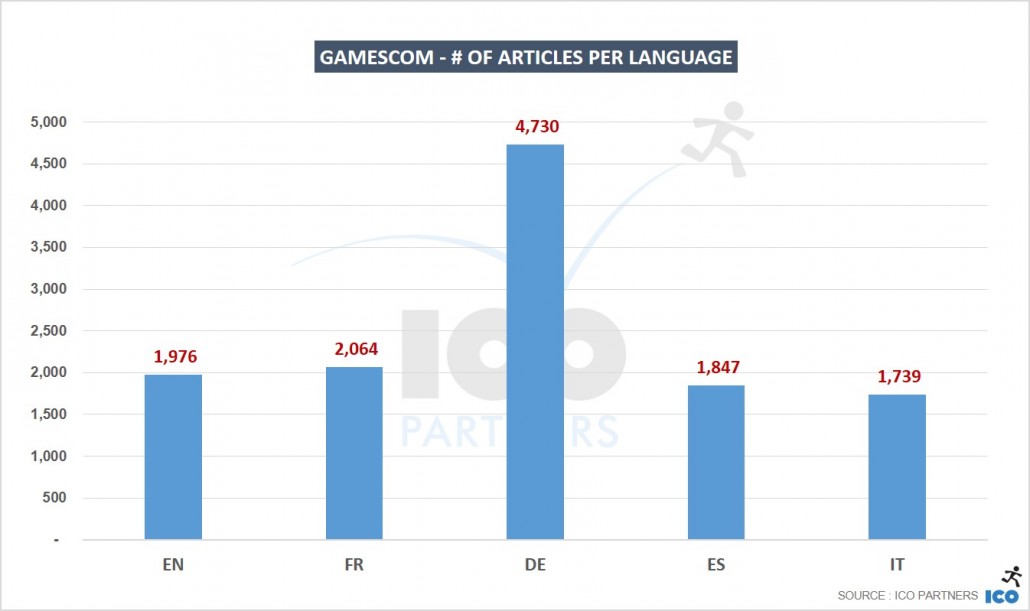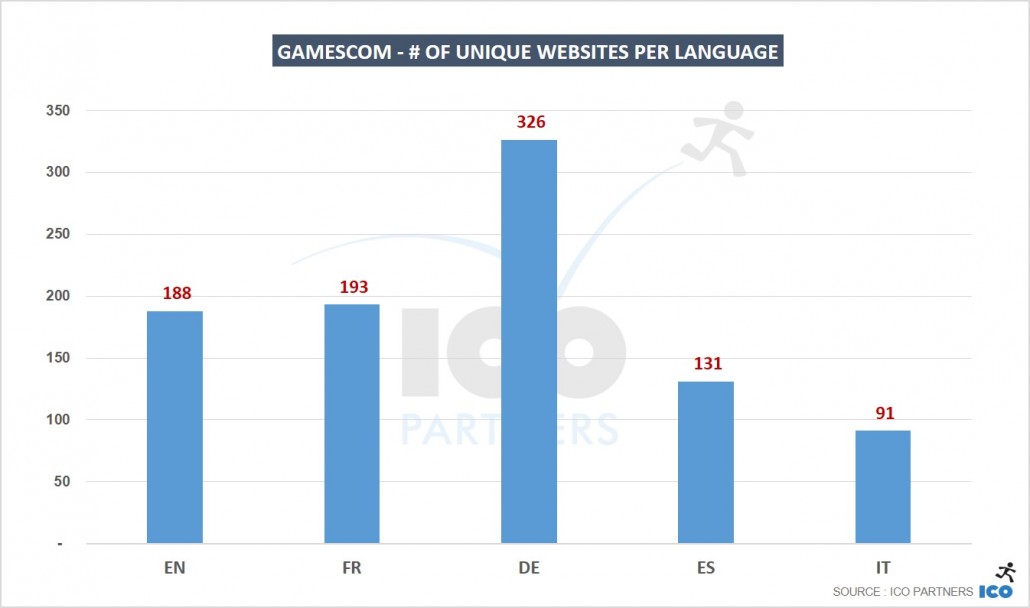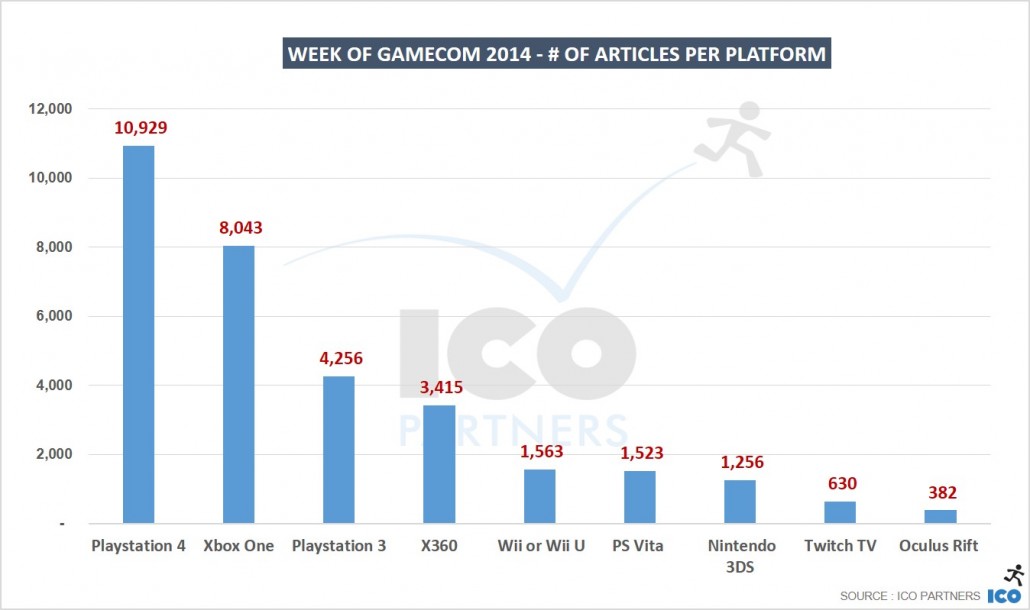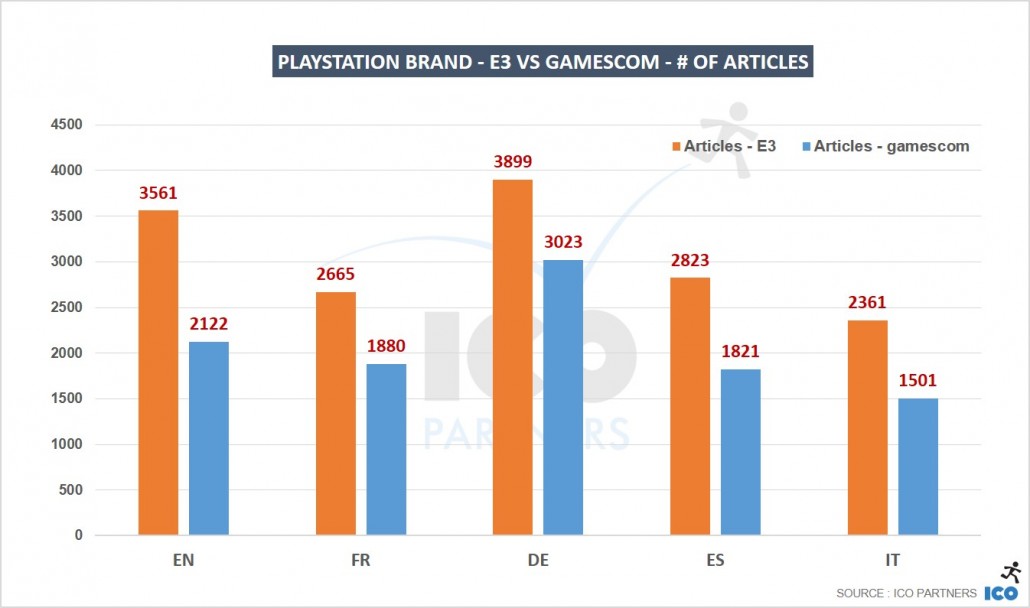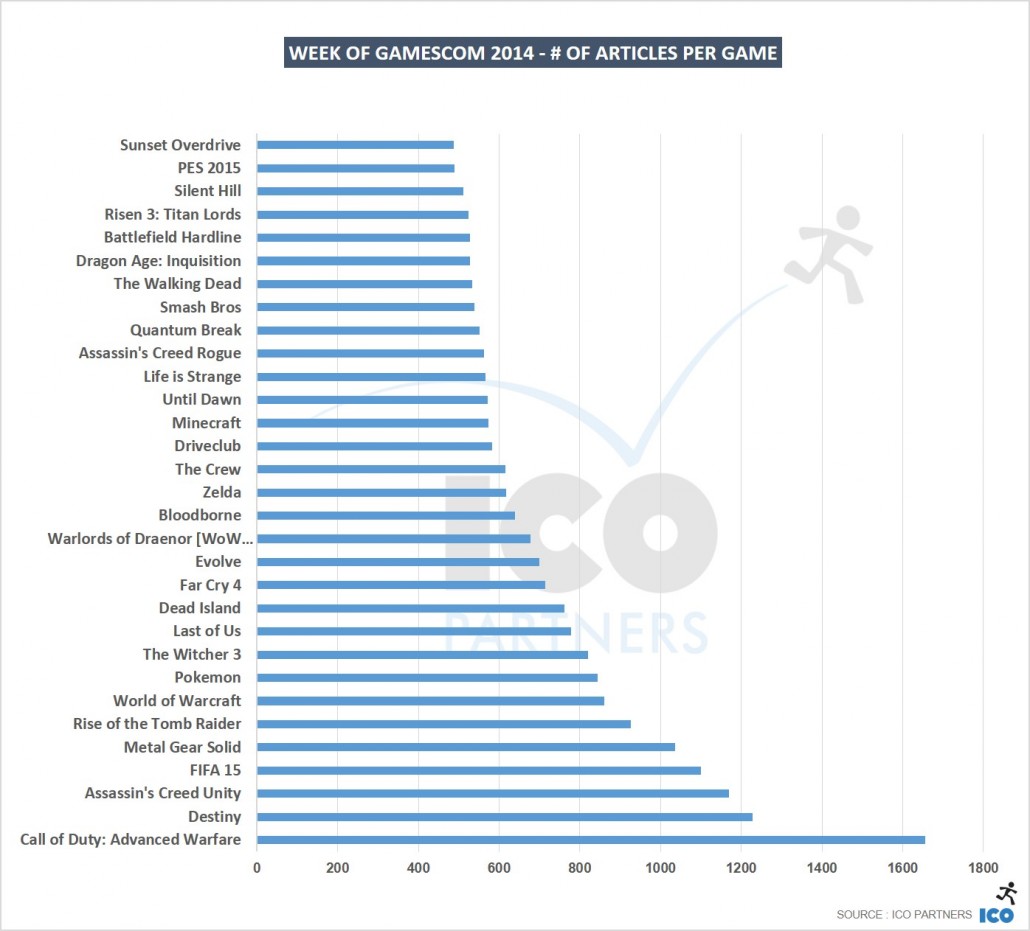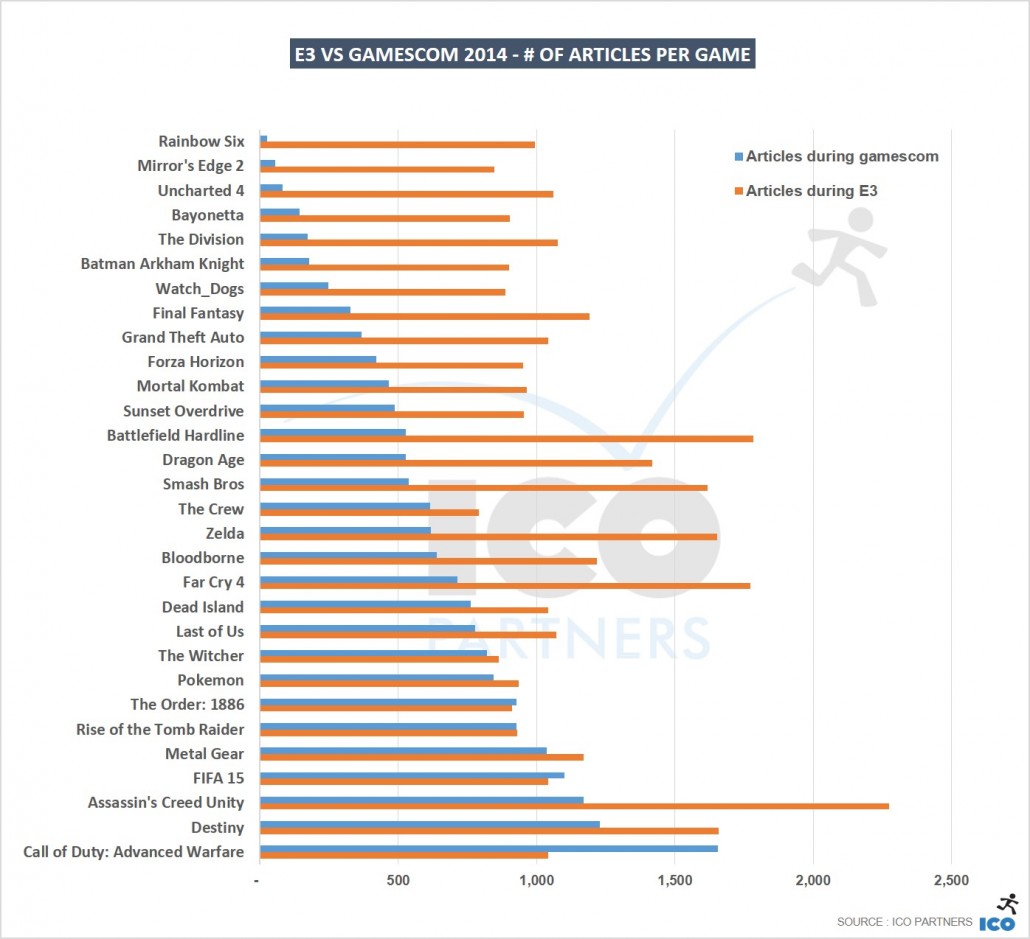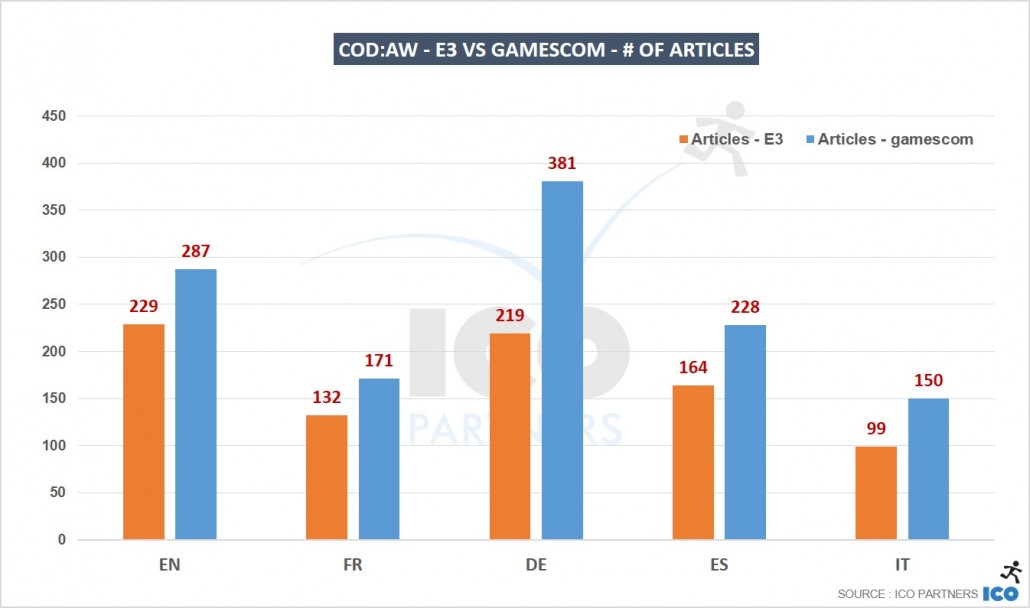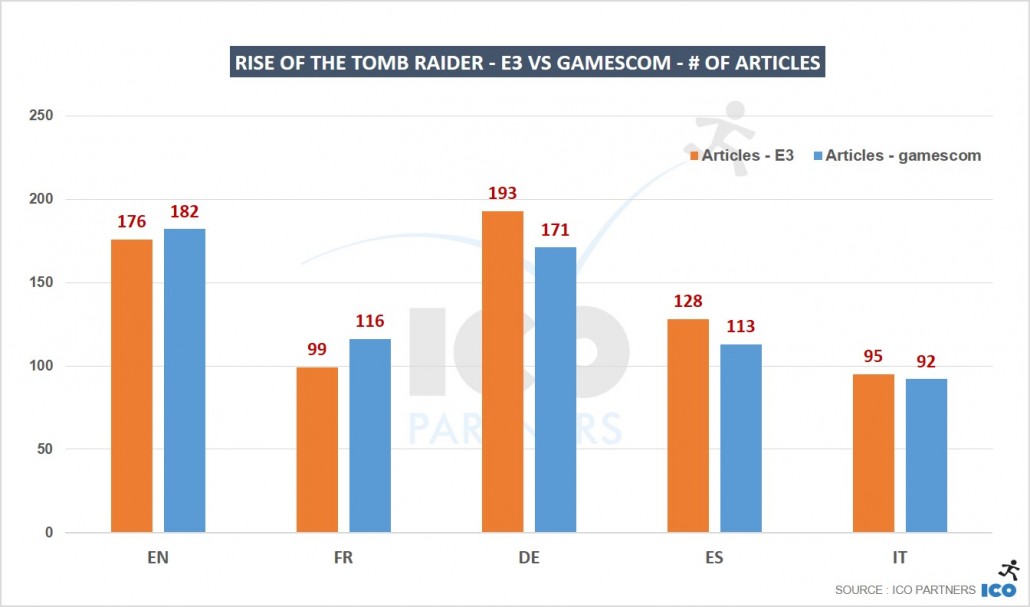A year ago, I did a pretty extensive analysis of the media coverage around E3. Well, I have done it again, and it now benefits from the added experience of data tracking for the past 12 months.
As usual, if you are not familiar with the way the data is collected, I invite you to read the blog post on the topic. For the purpose of this article, I have only looked at the data from articles published during the week of E3 (from Sunday to Saturday).
Last disclaimer: of all the games that were featured in the main press conference, we have one that is problematic to track with our current tools and which has been excluded from all the data below: Just Cause 3. Just keep this in mind, we haven’t ignored it, it is just a slightly problematic game for us at the moment.
Platforms
To get started, I wanted to get advantage of some information I didn’t have last year: the data from the previous year.
Comparing the coverage year-on-year is an important indicator, one I wanted to check first. It is important to note that the number of media we properly track is constantly evolving – some websites die, some news ones emerge, and sometimes the websites break the way we track them, so the system for tracking articles is consistently improved upon. Overall, I think the pure volume of media we track is increasing overtime, but it is a rather slow increase.
In terms of number of articles, we can see a decline for both Sony and Nintendo, while Microsoft has a significant increase in the media coverage. This might come from a stronger line up on Microsoft’s part or weaker showing from their competitors. We shall see later, but it might also come from a more clever selection of the multiformat titles featured for the respective conferences (well, between Sony and Microsoft as Nintendo is not invited to play that game).
* The following graph requires some pre-explanation. In order to measure the magnitude of an article, with have created a formula based on the websites’ Alexa ranking to give their articles different “weight”. The more popular the website, the more weight we give to their article. This value is called Reach in our tools and range from 0.1 to 10. For example, currently, Eurogamer.net has a reach of 10, Gamasutra.com has a reach of 9, MondesPersistants.com has a reach of 2. So what you see below, is a chart of the total reach of all the articles showed above. We refresh the reach values constantly.
The graph shows an interesting pattern. It shows that the media coverage might have reduced in volume, but the media covering the event have grown. It could be the websites have a better penetration than last year, or it could be more general interest media (that tend to have a much better reach) are taking a bigger interest in the video games news.
It also shows this year wasn’t a Nintendo year, hardly maintaining its reach from last year when both Microsoft and Sony expanded.
Looking more at the specific platforms more specifically:
Leading the pack, the Playstation 4 has roughly the same volume of articles as last year. Xbox One saw a 25% increase in the number of articles mentioning it. The Wii U, the PS3 and the Xbox 360 are all seeing a decline. That’s understandable for the two “old gen” machines, but more concerning for Nintendo.
On the front of the new technology, Oculus Rift (which had its own media conference the week before), Morpheus and Hololens are all holding up nicely in the same range.
I added StarVR, newcomer to the VR scene, as they had just announced their existence and had a presence at E3. With 264 articles, and considering their lower profile, I think this is a good performance.
Games
I have kept things a bit simpler this year and avoided looking at the games as mentioned during the console makers’ conferences. They tend to bleed over the conference of the publishers and not provide much insight. I am going to experiment with the publishers conferences instead – especially as this year two new companies are trying themselves at this perilous exercise with Bethesda and Square Enix joining EA and Ubisoft.
But, first, just looking at all the games we track, here are the top 15 games the most mentioned during E3:
First thing to mention, all the games making the top 15 were featured during one or more of the media conference.
Second thing to mention, FALLOUT 4!!! I have meant to write an article on the media coverage the announcement for the game had but couldn’t make it happen pre-E3. From the current research I made for that article, Fallout 4 announcement is the most covered game announcement since we track these data. By a large margin. But even with such a strong sign of the franchise power, I didn’t expect Fallout 4 to dominate by that much, especially after the storm of coverage that FF7 and Shenmue created.
Bethesda had a brilliant timing and this helps a lot for their presence in that chart (Fallout 4; DOOM; Dishonored 2). By going first on the Sunday, with journalists all already present in LA and with nothing to do for a whole news cycle but write about their games, Bethesda snatched a great spot. Fallout also got double featured, at the Bethesda event as well as the Microsoft briefing.
Sony, despite losing ground to Microsoft year-on-year, still has the knack to bring topics that make the buzz going: Final Fantasy 7; Shenmue on Kickstarter; The Last Guardian. They certainly won’t be able to use a similar trick for next year – unless they can convince Ubisoft to announce Beyond Good and Evil 2 at their press conference that is…
Comparing the publishers’ conferences
Looking at publishers one by one, Electronic Arts looks a bit underwhelming. Arguably, Battlefront did very well, considering how loved the franchise is (the movies and the games), it is a bit surprising it didn’t perform even better. It didn’t pass on the coverage Battlefield Hardline received the previous year, a surprising fact. Mirror’s Edge coming as the 2nd game of the publisher is more surprising. While critically acclaimed, Mirror’s Edge wasn’t a big hit. Few details were available ahead of the show (and seemingly not in a controlled fashion that might have compromised the potential) possibly making it a hot topic for journalists on site last week. Interestingly, FIFA 16 has about 20% fewer articles this E3 than what FIFA 15 had last year. Pelé didn’t make up for it.Bethesda is the clear “winner” this year. They didn’t have many games at the show, but they got the interest of the media. While Fallout and DOOM are strong and well established franchises that haven’t been seen in a while, Dishonored 2 has done very well for itself. For the second title of a new IP, it received 50% more coverage than this year’s Assassin’s Creed. Quite the performance. The other surprise is Fallout Shelter. While Fallout is obviously a strong brand, mobile games are generally not as well covered as PC/Console titles by a very significant margin. Fallout Shelter is not only the 4th Bethesda most talked about game (coming before The Elder Scrolls titles as well as Battlecry), but it received coverage comparable to Ubisoft’s key titles. My theory is that it benefitted from a number of things: the Fallout brand; the 1st game on mobile for Bethesda; being available “right now”; the excellent Bethesda timing mentioned earlier. If you are a journalist in LA on the Sunday before E3, waiting for the big event to start the following day, why not download this now to give it a spin?
I have already mentioned Ubisoft twice in this section, not in a very positive manner. What happened? To be honest, I like Ubisoft’s conferences. But maybe the formula is a bit too established? The Division‘s very decent performance is the saving grace, and a surprising one to me: this is not the first time the game is presented at E3. But it managed to garner more coverage than last year (about 10% more). Possibly, the fact it got featured during 2 of the conferences helped significantly? I imagine the game was playable on the show floor and that, along with a release date, was a contributing factor. Rainbow 6 Siege was also present at last year E3, and it also received more coverage this time around. Assassin’s Creed Syndicate is the disappointing element of the Ubisoft line up. Assassin’s Creed Unity had about 2,300 articles during last year show – compared to this, Syndicate doesn’t even reach the 1,000 articles threshold. I found the trailer quite compelling, I suspect something different happening in the strategy for the game this time around: looking at the daily data for the two games, it is obvious there was significantly more coverage on the days after the conference for Unity than for Syndicate. Overall, a weak media presence, especially considering that last year, Ubisoft had Assassin’s Creed Unity as the most covered game of E3 and Far Cry 4 as the 3rd most covered game of E3.
To conclude this section, Square Enix returned as a publisher hosting a conference. It wasn’t an easy ride for them – they had to postpone their conference after realizing they would collide with Nintendo’s; and the conference itself was… let’s say there is a huge margin for them to improve for next year. But beyond those considerations, the numbers are showing up. Even if you are ready to consider the Final Fantasy VII as a unique anomaly (how often will you be able to reboot one of the most well-loved games in the world?), the Hitman announcement has been very well received (arguably, I think the Deus Ex announcement in April was a better announcement, but that will be for its own case study). Deus Ex Mankind Divided did very well. It was supported massively by the 20 minutes demo on the show floor – a video of which was shared later in the week, leading to a lot of additional coverage for the game. Tomb Raider is getting a very decent amount of coverage, but maybe not to the extent I would have expected for the franchise. Overall, Square Enix did incredibly well (and that’s without being able to properly track Just Cause 3). Not sure how much more coverage they got through this though – a lot of their coverage was supported by console makers conferences (FF7 with Sony and Tomb Raider with Microsoft).
It is fascinating to see the two publishers that aren’t traditionally seen hosting an E3 conference performing so well in comparison to EA and Ubisoft. I am pretty sure the devil is in the details, and the fact they elected to have a conference this year of all years was also driven by the strength of their announcements. Nonetheless, I wouldn’t have predicted such an outcome.
Mobile titles
This segment is a bit of a stretch as they aren’t many mobile titles that are part of the E3 line-ups, but it is the opportunity for me to make a point that I already discussing on the Goat Simulator case study.
A quick overview of the games, from the publicly available information:
Fallout Shelter (Bethesda) – a management game, set in the Fallout universe, revealed at the conference and available to all at the same time.
The Elder Scrolls Legends (Bethesda) – a CCG set in Tamriel, the universe of The Elder Scrolls series. Revealed at the conference, it will be available on iPad and PC but no release date for now.
Lara Croft Go (Square Enix) – a turn-based puzzle adventure game, based on the Tomb Raider franchise. Announced at the conference, nothing specific on devices required and no release date announced yet.
Minions Paradise (EA) – a management game, set in the Despicable Me universe. I am a bit confused on the whole announcement, trying to do some quick fact checks, it seems the app is already on the different stores, since end of April, but the conference presented it as an upcoming game, the host even stating “later this year”. So, go figure. Not sure it would have made a massive difference for the media present.
Star Wars Galaxy of Heroes (EA) – a CCG set in the Star Wars universe. Announced at the EA conference, no release dates and no devices specified.
Kingdom Hearts Unchained Key (Square Enix) – an adventure game (I think) set in the Kingdom Hearts universe (now, that’s the easy way out for me to avoid explaining that setting). Announced at the Square Enix press conference, with no release date.
Here are my takeaways (based on a very small sample, so it might not be worth much):
- I don’t understand how the Elder Scrolls CCG got so well covered. It might be the brand; it might be the fact it was announced as coming to PC; it might be because Sunday was a pretty boring day in LA.
- Minions Paradise had a whole part of the EA conference presentation dedicated to itself. With a trailer followed by a gameplay demo. Nobody cared. Planning your communication for your mobile title like a console or a PC game seems like a bad idea.
- But not as bad an idea as just announcing “a Star Wars CCG with all the characters of the franchise you love”. I don’t think you can make it sound more generic and bland. At least, the Elder Scrolls CCG had a trailer of sort.
- Lara Croft Go was very well covered all things considered. I suspect Hitman Go and the relatively good feedback it received helped, along with a peek at the art direction and the game style.
- Nobody cared about Kingdom Hearts Unchained Key, despite providing a (cryptic, I admit) gameplay video.
- Announcing your mobile game as it becomes available seems like a good idea. The brand is a multiplier if you have one.
Non-AAA titles
Finally, I wanted to also provide a sample of smaller titles, across the board from the games presented at E3, to provide some benchmark materials beyond the big titles. Here is the selection with some context:
American Truck Simulator (Excalibur Publishing) – announced during the PC games conference. A simulator where you drive trucks in America.
Beyond Eyes (Team17) – announced during the Xbox conference and featured during the PC games conference. A game where you play as a blind girl named Rae in search for her missing cat.
Crossing Souls (Devolver) – featured during the Sony conference. An action-adventure game in pixel art and with a goonies vibe to it.
Cuphead (Studio MDHR) – featured during the Xbox conference (and revealed last year IIRC). A run and gun Platform game drawn in the style of 1930s cartoons. Also, my personal favourite concept (along with SUPERHOT).
Mother Russia Bleeds (Devolver) – featured during the Sony conference. An ultra violent Beat ‘Em Up game set in an alternate 1980s USSR.
No Man’s Sky (Hello games) – featured during the Sony conference and during the PC games conference. A science-fiction game set in an infinite procedurally generated galaxy.
Unravel (EA) – announced during the EA press conference. A physically based platformer with a character made of yarn.
Vampyr (Focus Interactive) – not featured during any of the high profile conference but presented during the show. An Action RPG set in early 20th Century England.
With the selection I tried to have games with different profiles, that were presented through different medium during the event and with interesting comparison points.
Crossing Souls and Mother Russia Bleeds are both published by Devolver, they both got the same visibility during the Sony press conference and they were both hands on at the show (from what I could gather). Mother Russia Bleeds also released a trailer later in the week. Ignoring the media that trailer generated, Mother Russia was still getting more media coverage than Crossing Souls. The more immediately understandable gameplay, and the very graphic violence possibly making it an easier story to relay.
Cuphead has received a lot of coverage, thanks to its very unique art direction. Considering that Beyond Eyes was featured at a similar level at the Xbox conference, and was featured again at the PC conference, Cuphead has been resonating better with the media (and makes for very shareable gifs).
No Man’s Sky and Unravel are two games that have been incredibly well covered, while being outside of the AAA norm. No Man’s Sky has been announced in December 2013 and was already featured at E3 2014 (at the Sony conference). Coverage this year has progressed from last year (about 200 more articles). Unravel on the other hand is one of EA’s rare venture into games outside of the AAA formula, and with its reveal garnered almost as much coverage as FIFA 16. What made those two games perform so well? With No Man’s Sky, there is no doubt since its announcement that there is a strong following for the game and media is following suit. The details are quite rare and the E3 demo, while short, illustrated elements of the game never shown before. Unravel on the other hand was an announcement (more case studies on those to come), garnering extra attention thanks to this, and the incredibly emotional designer that presented the character on stage (a real doll made out of yarn) probably resonated well with the audience, while being at odds with the usually dry and corporate image that people have of EA.
Vampyr finally is very interesting. For not being featured at any of the conference, this game made by Remember Me and Life is Strange developer Don’t Nod, was relatively well covered with its presence at E3, illustrating that the press conference are not necessarily the end all solution for a decent media presence from your E3 show.
Closing words
I have tried to keep the size of the article under a manageable size. There are more that could be dug from the data gathered (and I might do some follow ups), but I hope this gives a good view of last week’s E3 and the media outcome from the different announcements.
There is no doubt in my mind that Bethesda is the clear “winner” of this E3. They brilliantly managed the event (from a media presence perspective at least) and I will be very curious to see next year who will try to get the Sunday conference spot. Prior to the event, I was very skeptical about Bethesda decision to do a conference at E3. Those conferences are expensive to set up and a massive burden on your teams to organise properly. I also tend to question the wisdom to share the limelight with your competition during the same week. Sony’s Playstation Experience was a great illustration of how running your own media event could benefit you in a great (better?) way than a shared global event. With Bethesda running Quakecon, I was thinking they would be diluting their effort in an event where it would difficult for them to shine. I was wrong – they did great. Which makes me wonder if the others were not wrong in sharing their audience with them this time around.
I will leave you with this comic from @TheMeatly, illustrating nicely those concluding thoughts:
What it is REALLY like to announce your #gamedev at #E32015!… O.o#indiedev @TheMeatly #gaming pic.twitter.com/h1DbA3bIZ8
— theMeatly (@themeatly) June 17, 2015

